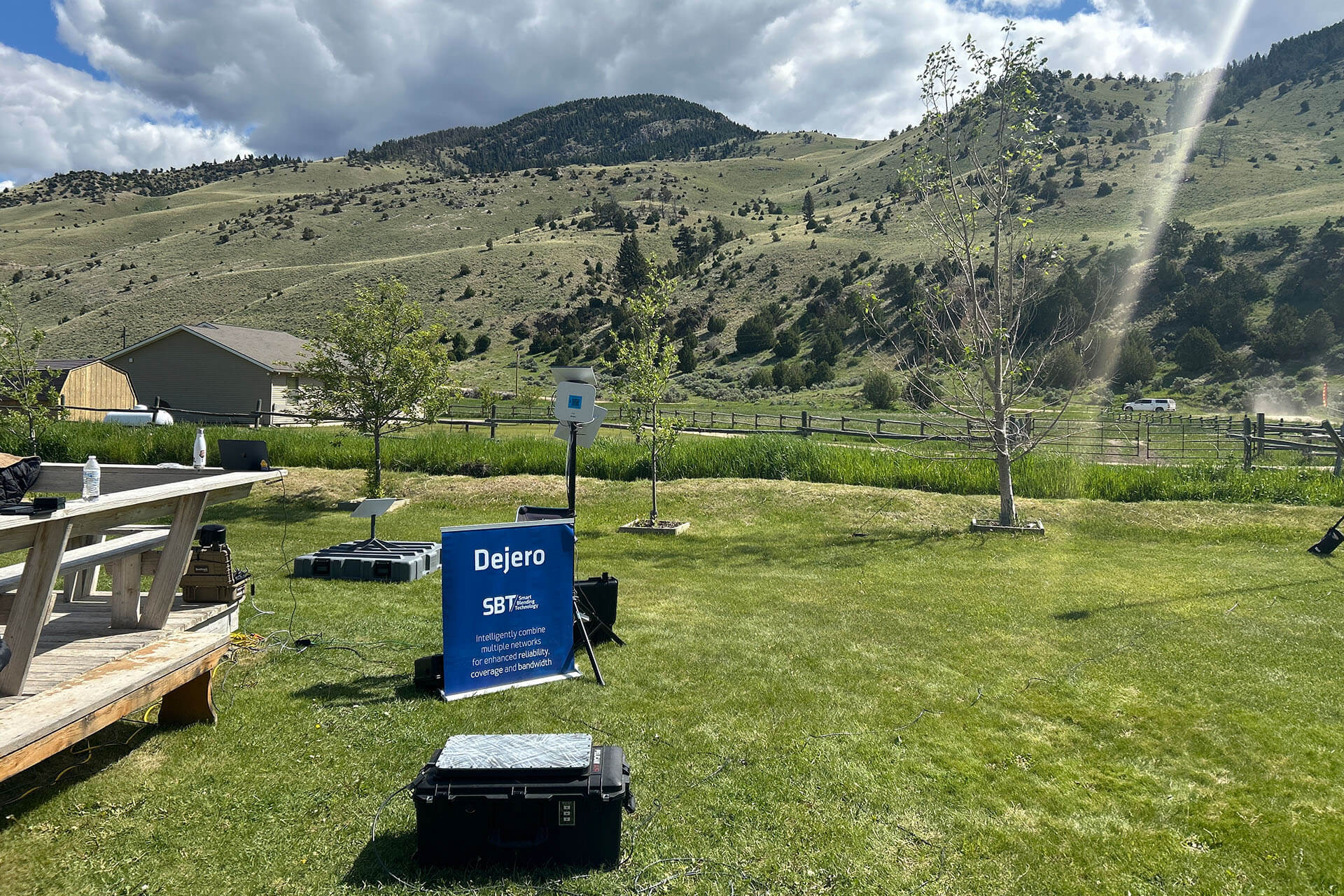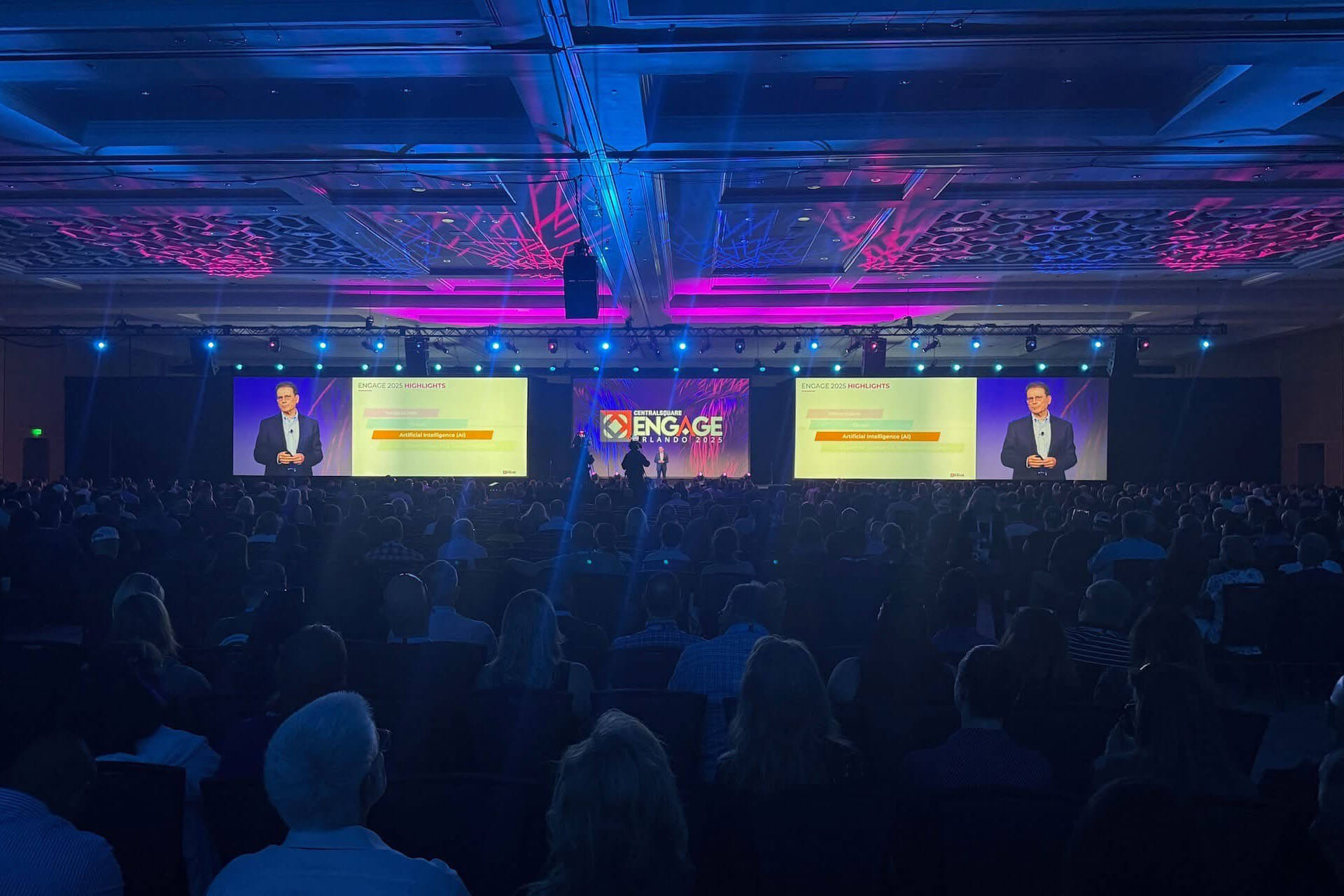Without a doubt, bonded cellular has done more to change how News Operations Managers have run their business than any other development in the industry. The ability to go live from anywhere, at any time, is key — largely influencing the transformation of the traditional news truck.
The capabilities that bonded cellular enabled were discussed at length in our recent webinar, moderated by broadcast journalist Hannah Shellswell. Dejero founder Bogdan Frusina, with AMT President Tom Jennings and broadcast veteran Jim Casabella, discussed the freedom this technology allows.
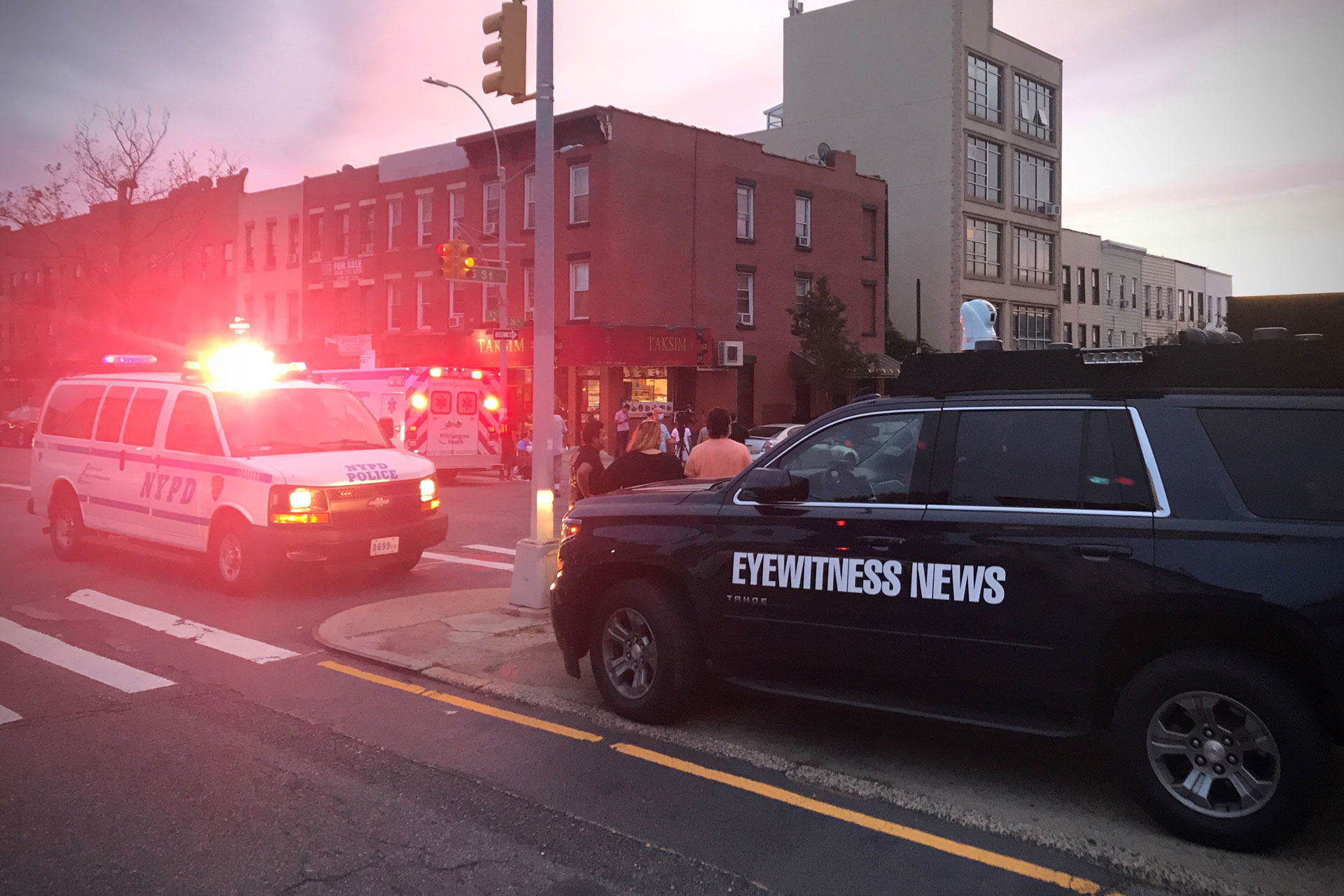
You know the expression the ol’ ball and chain? That’s the news station in this scenario
Bonded cellular was definitely a game-changer, ensuring news could be produced live on the road, without having to head back to the station to file a story. This newfound independence from the station ensured more journalists could be out in the field… newsgathering.
“These improvements in mobility, no longer being tethered to the truck. Being able to jump out and run to wherever the news is, extending range, improving reliability. Equipping journalists with mobility allows them more versatility. They’re no longer tied down or dependent on four walls,” the experts remarked.
And though it’s still true that the traditional news station plays an integral role in technical operation and distribution, these days the ability to be connected and mobile is the name of the game. In other words: the "new" news truck. More efficient, able to keep crews out on the street for longer periods of time, and no longer requiring specialized operators means that broadcasters can do more with less. The ease of use of the technology means users in the field can create high-quality content much more easily than before.
“Suddenly all vehicles are live vehicles,” Casabella observes. “ These trucks are out constantly. They never go back to the station. They go out, then they move onto the next story. It’s a completely autonomous operation. One button push, turnkey. Ease of use is absolutely essential.”
The nature of the newsgathering industry itself is nomadic, and that’s why these plug and play advancements were impending. It’s no longer practical to wholly depend on a fixed location, when most of the news breaks out in the field. Reducing costs, blending connections, cheaper and more reliable solutions — innovators really are approaching this challenge from a myriad of angles, but one thing remains clear: mobility equals flexibility.
Smaller, faster, stronger, and lighter
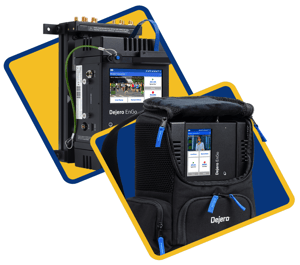 That’s the overall trend in broadcast vehicle fleets according to the experts. And companies like Dejero are creating products that work in tandem with the truck, like the EnGo 260. The EnGo can be used on foot, easily portable with a backpack and perfect for field use but — when paired with the Vehicle Antenna Dock accessory — can serve double duty as a vibration-tested encoder/transmitter in your broadcast vehicle to maximize versatility.
That’s the overall trend in broadcast vehicle fleets according to the experts. And companies like Dejero are creating products that work in tandem with the truck, like the EnGo 260. The EnGo can be used on foot, easily portable with a backpack and perfect for field use but — when paired with the Vehicle Antenna Dock accessory — can serve double duty as a vibration-tested encoder/transmitter in your broadcast vehicle to maximize versatility.
Over the last few years, with the EnGo especially, so much has become possible. Having the ability to cover a story without having to connect to the truck and the option to quickly connect to the truck when it is necessary. The list of benefits seems endless: being able to connect to a vehicle’s high-powered external antennas, to dock and undock gear quickly versus traditional rack-mounted solutions. The ability to "drive live" anywhere anytime, and most recently with Smart Blending Technology (SBT) to be able to aggregate with CellSat solution. All these new capabilities are supporting each other in order to keep up with the 24/7 news cycle. And most importantly, to be able to go live when and where others cannot.
Creating contingency plans
How has the recent pandemic impacted broadcast vehicles?
Let’s go back to the ol’ ball and chain reference. If this were a marriage, the trust was officially broken when you realize that relying entirely on a physical news station to broadcast can leave you vulnerable when disaster strikes.
Frusina recalls the devastation Hurricane Sandy caused, “it’s not a thing that’s optional. You have to think about it. You have to have a plan. Most accountants would say this doesn’t generate any revenue,” Frusina warns, “but when something happens, the cost and the impact it has on finances is much higher than the cost of deploying these [solutions].”
COVID has exposed a new vulnerability that at any given moment, you won’t be able to occupy your television station. Prior to this pandemic disaster recovery was more centred around storms, power outages or other natural disasters, how to get the station back on the air. Few were thinking, “What if we can’t physically enter the television station? What’s the contingency plan?”
“Turmoil, transition. COVID, just like the recession, were both catalysts that really changed the way news is collected, almost overnight,” Tom reflects. Having a disaster recovery plan in place in terms of connectivity is now recognized as a priority —accelerating the adoption of newer technologies — namely the transition to IP workflows and the cloud. “The station is no longer the hub, the station is feeding the cloud,” says Casabella. The disaster recovery model has changed. Or at least it should.”
Being prepared is key to business continuity, especially in times of crisis. To be fair, many stations were already recognizing this, evaluating a transition to the cloud — albeit with apprehension.
The trepidation is real — it’s still a scary thought moving away from fixed address news stations with hardwired servers, and trusting the news truck to function autonomously. But some are embracing the challenge, “it’s opened the door for General Managers and News Directors looking at this as a new opportunity to explore and find out what else we do. How can we protect ourselves? No need for this on-premise, Fort Knox approach, where everything is in the building,” adds Jennings.
In fact, AMT has recently helped a station to achieve full remote production outside of the station. In the event they ever needed to evacuate, they would still be able to conduct the newscast from the parking lot. Wanting to reduce their dependence on the station, the Dejero GateWay provided the connectivity backbone to implement a high capacity pipeline in the truck to facilitate receiving all the data needed. This in turn could be manipulated and turned into a newscast, all from inside the truck.
Jennings on the Dejero Gateway: “I’ve never seen anything like this. It’s in a league all on its own. Dejero itself is in a league of its own when it comes to critical connectivity in mobile and nomadic scenarios.”
Retro vans retrofitted
Advice from the broadcast veterans on exploring these options in a cost-effective way? Retro vans retrofitted. Re-evaluate the status of those vehicles that are sitting in the station’s parking lot. Those are often great candidates for adding IP or IP SatCell. “You can save a lot of money. The upfit is key. If that part is done and all you’re doing is refreshing technology, that’s easy.”

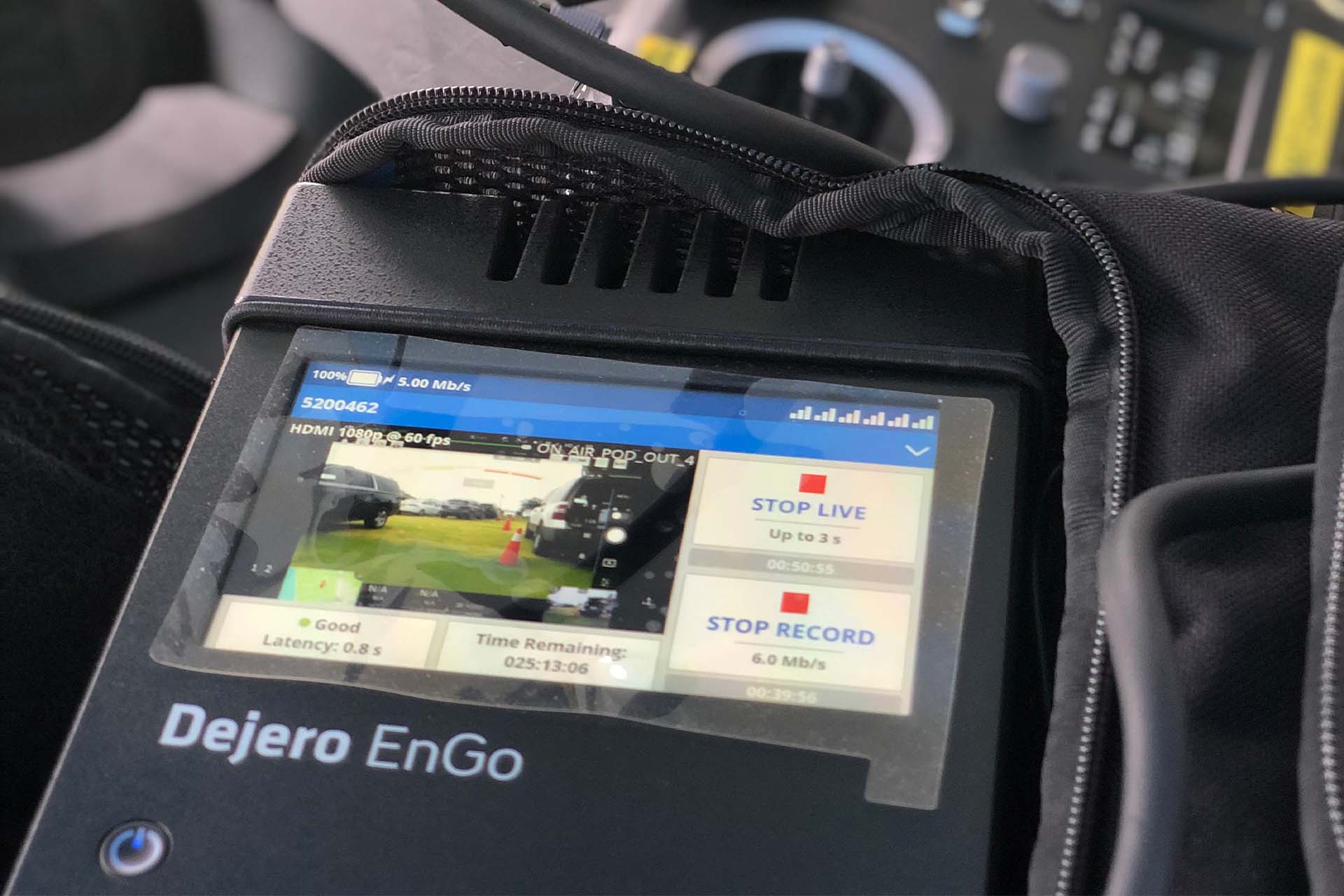
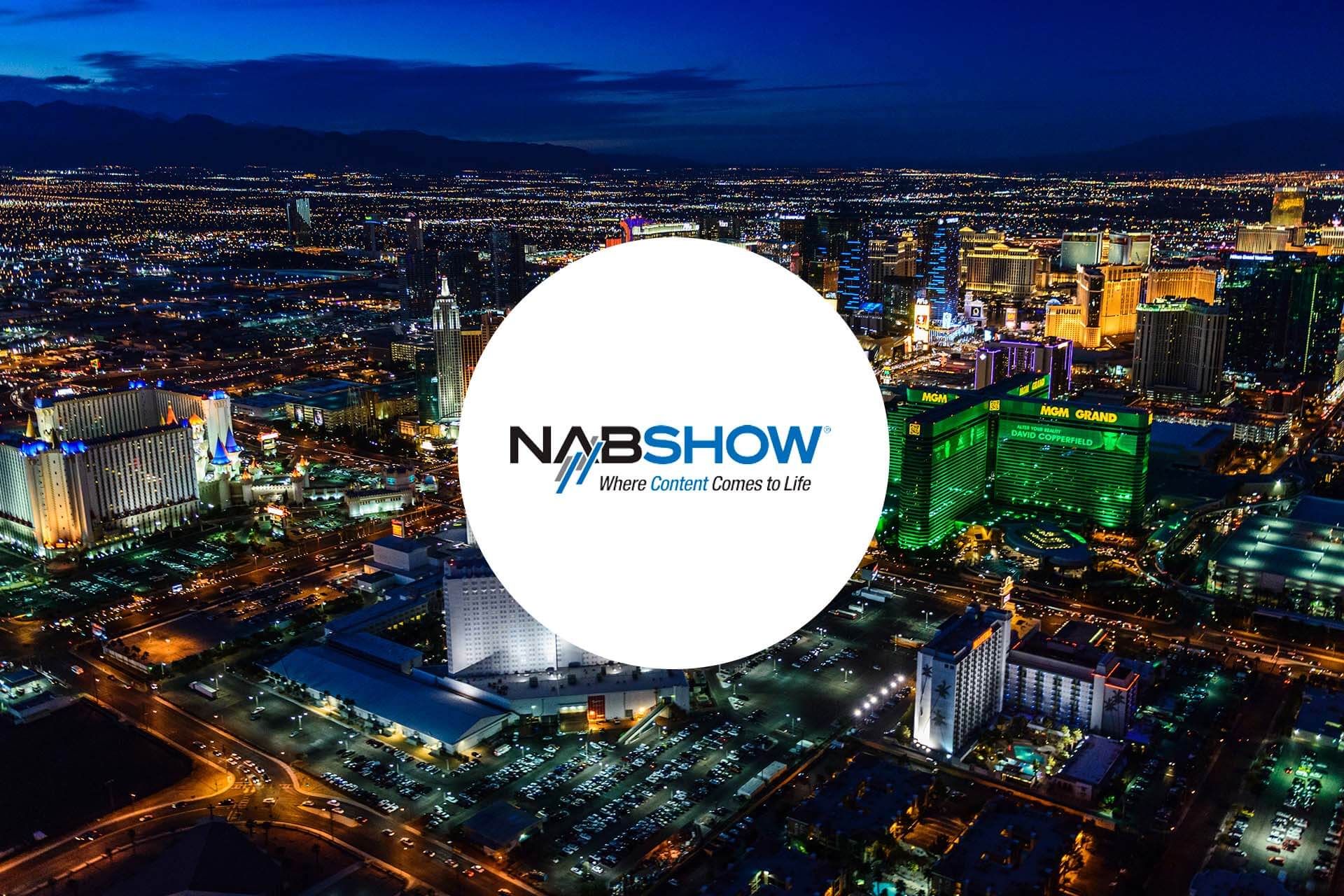


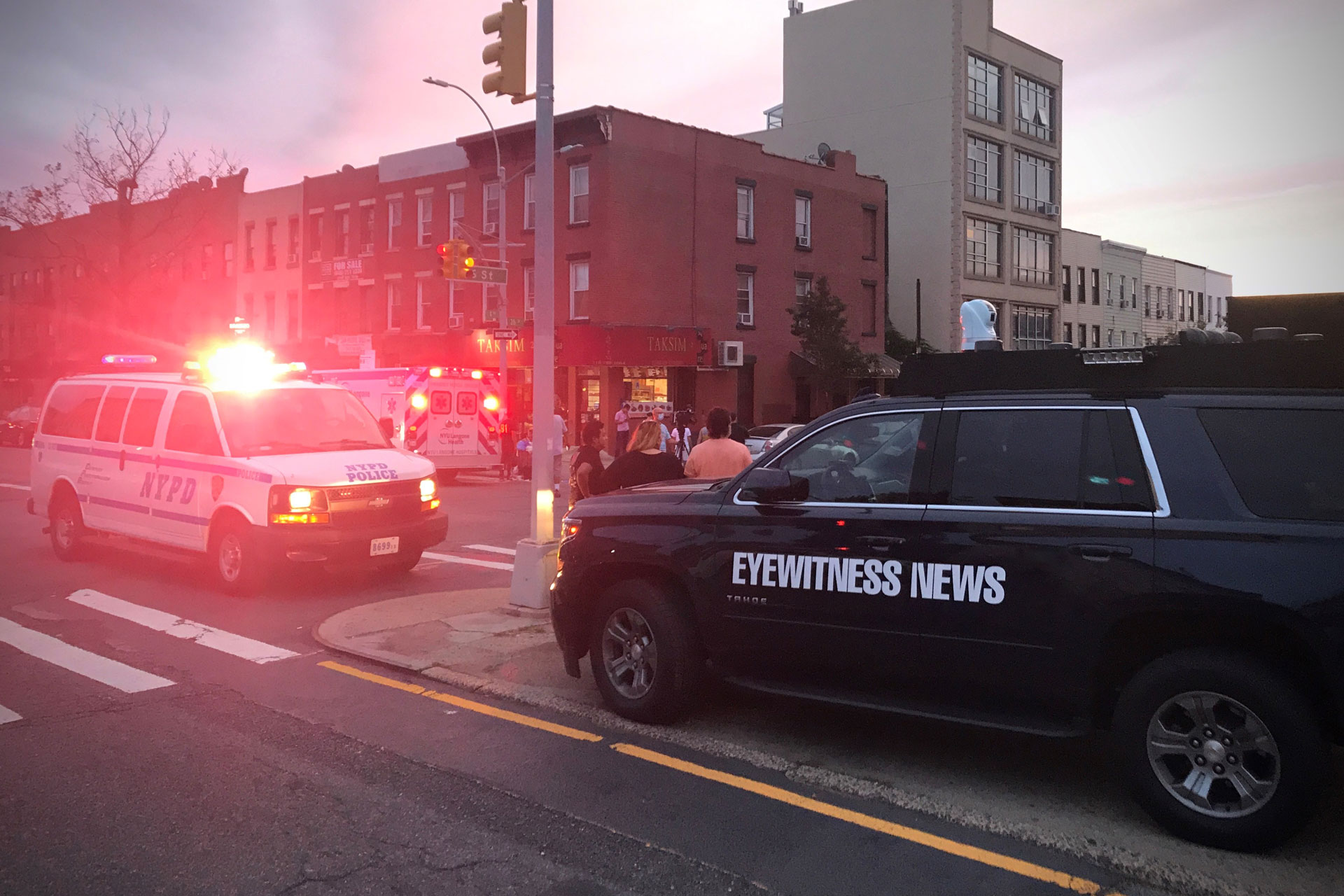

 That’s the overall trend in broadcast vehicle fleets according to the experts. And companies like Dejero are creating products that work in tandem with the truck, like the
That’s the overall trend in broadcast vehicle fleets according to the experts. And companies like Dejero are creating products that work in tandem with the truck, like the 
